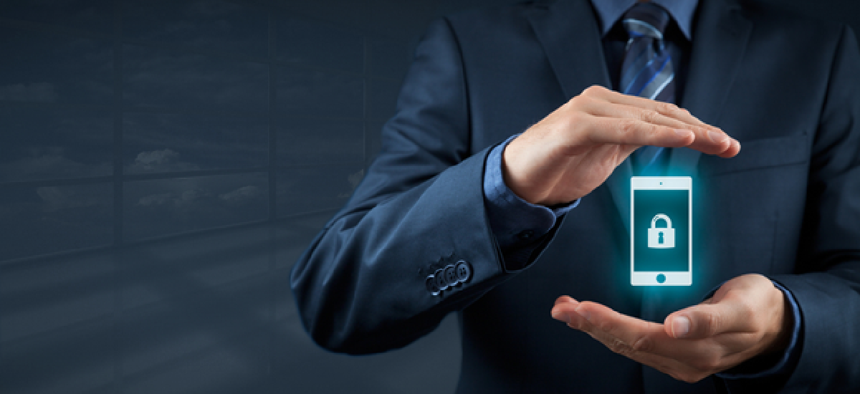Balancing mobility with security: What government can do


Connecting state and local government leaders
Combining the basics of good IT hygiene with the powerful and unprecedented protection of today’s operating systems and processors ensures that agencies will meet the security demands of the modern, mobile workforce.
The consumerization of IT is not only changing the way employees work, it’s changing their expectations of government IT. Employees look to their agencies to provide modern IT services, interfaces and capabilities -- most of which have historically been the responsibility of IT departments. The trouble is that accommodating the mobility demands of today’s users presents a fundamental security challenge to IT teams used to retaining control of every system, app and network under their purview.
How do IT teams balance the demands of flexible and secure mobility, accommodate users’ preferences and modernize their IT environments? Below are a few considerations.
Embrace modernization and mobility
The federal government’s 2015 cybersecurity sprint was a top-down recognition of the role that modern IT systems play in increasing the overall security baseline of the U.S. government. Agencies running legacy systems are ill-prepared to deal with today’s mobile workforce and the advanced threats it presents.
However, recently introduced operating systems feature game-changing security that could prove advantageous for agency IT administrators. Specifically, the advent of virtualization-based security capabilities makes it possible to isolate critical data from the OS and restrict access to privileged system software, thereby preventing attackers from remotely taking control of end-user devices.
Enhanced innovation is also taking place at the mobile processor level. Built-in software guard extensions can be used by applications to set aside private regions of code and data. In this approach, rather than attempting to identify and isolate all the malware on the platform, legitimate software can be sealed inside an enclave and protected from attack, irrespective of the privilege level of the malware. When combined with powerful and secure operating systems, this creates an unparalleled level of software and processor security that protects and preserves application data in the mobile enterprise.
Persistent threats to mobile devices and laptops can be mitigated by these hardware and software security features that, when configured together, will lock a device down so that it can only run trusted applications that have been signed by the agency rather than by developers. This puts control squarely in the agency’s hands. Even if attackers manage to get control of the kernel, they will be much less likely to be able to run malicious executable code after the computer restarts because of how decisions are made about what can run and when.
Shift security mentalities
A critical aspect of modern, mobilized IT security is the adoption of a breach mentality -- one that emphasizes detection as opposed to just prevention. Adopting a risk-profile-based approach to managing data can help, as can shifting skill sets to focus on solid prevention and detection skills. To do so, government agencies should:
1. Apply basic hygiene principles. When employees bring mobile devices into the workplace, they are essentially bringing in an unmanaged -- and potentially unhealthy -- system. As such, any bring-your-own-device risk-mitigation program needs to start with good, basic device hygiene. Here are some questions to consider, with correct answers in parentheses:
- Is the device patched? (Yes)
- Is the software on the device up-to-date? (Yes)
- Is it a modern operating system, such as iOS, Android or Windows 10?
- What data can the device access? (Only the data the user absolutely needs to be able to access)
The answers will help determine whether or not the BYOD device should be allowed to access the network.
2. Authenticate and protect high-value assets. The advent of cloud and BYOD has fueled the need for strong two-factor authentication policies. Implementing such policies starts by identifying high-value assets and classifying them by high, medium or low business impact. The more important the data, the higher the level of security should be required for remote access.
Segmenting workforces using role-based profiles makes it easier to choose a device that fits individual users, which allows for greater control over each end-user’s access privileges.
The good news is that many of today’s mobile devices come equipped with out-of-the-box authentication built into the hardware and operating system. This alone makes the process of developing and managing rules-based access much simpler.
Combining the basics of good IT health with the powerful and unprecedented protection of today’s operating systems and processors ensures that agencies will meet the security demands of the modern, mobile workforce. Rather than relying on traditional, point-security solutions to alert and block attacks, the operating system and processor work together to deliver tamper-resistant security. By trusting only those apps authorized by the enterprise, while isolating software inside an enclave, government agencies can enjoy unprecedented protection from the security threats while retaining control of their increasingly connected IT infrastructure -- from within.
NEXT STORY: How to fight security-solution fatigue




